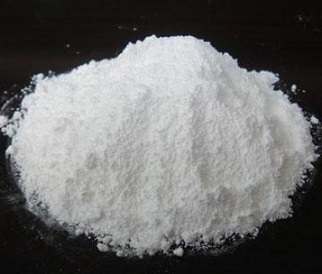|
| | Clopidol Basic information |
| | Clopidol Chemical Properties |
| Melting point | >320℃ | | Boiling point | 318.4±37.0 °C(Predicted) | | density | 1.2494 (rough estimate) | | refractive index | 1.5500 (estimate) | | storage temp. | Inert atmosphere,Room Temperature | | solubility | Aqueous Base (Slightly), Methanol (Slightly, Heated) | | form | neat | | pka | 5.50±0.33(Predicted) | | color | White to Off-White | | Water Solubility | 40mg/L(temperature not stated) | | Stability: | Hygroscopic | | InChIKey | QCMHHYSPKNVXLR-UHFFFAOYSA-N | | CAS DataBase Reference | 2971-90-6(CAS DataBase Reference) | | EPA Substance Registry System | Clopidol (2971-90-6) |
| | Clopidol Usage And Synthesis |
| Description | The drug methylchlorpindol is used for the prevention
of coccidiosis in poultry. | | Description | Clopidol is a coccidiostat. It prevents mortality of chickens infected with the parasites E. tenella, E. necatrix, E. acervuline, E. mivati, E. brunetti, and E. maxima. It has antimalarial activity against P. berghei in mice and P. cynomologi in rhesus macaques. Clopidol is a potential contaminant in food poultry. Formulations containing clopidol have been used in the prevention of coccidiosis in chickens. | | Chemical Properties | Clopidol is a white to light brown powder.
 | | Uses | GABA Cl channel agonist, antiparasitic | | Uses | An antibiotic used in veterinary medicine as a coccidiostat in poultry. Showed low order of acute and chronic toxicity in animals. | | Uses | An antiprotozoal agent. | | Definition | A penta-substituted pyridine derivative. | | General Description | White to light-brown, crystalline solid. Mp: 320°C. Practically insoluble in water. Administered to poultry to prevent the growth of pathogenic parasites. | | Reactivity Profile | Clopidol is a non-combustible as a solid, but dust may burn rapidly or explode when mixed with air and ignited. | | Hazard | Toxic. Mutagenic effects. Questionable carcinogen. Clopyralid. | | Contact allergens | This drug is used for the prevention of coccidiosis in
poultry. | | Safety Profile | A nuisance dust. When
heated to decomposition it emits very toxic
fumes of Cland NOx. | | Potential Exposure | Those engaged in formulation, application or manufacture of this veterinary antibiotic. Used as a pharmaceutical and as feed and food additive | | Shipping | UN3249 Medicine, solid, toxic, n.o.s., Hazard Class: 6.1; Labels: 6.1-Poisonous materials. | | Incompatibilities | Noncombustible solid, but dust may explode in cloud form. Contact with strong oxidizers may cause a fire or explosion hazard | | Waste Disposal | Dispose of contents and container to an approved waste disposal plant. All federal, state, and local environmental regulations must be observed. It is inappropriate and possibly dangerous to the environment to dispose of expired or waste drugs and pharmaceuticals by flushing them down the toilet or discarding them to the trash. Household quantities of expired or waste pharmaceuticals may be mixed with wet cat litter or coffee grounds, double-bagged in plastic, discard in trash. Larger quantities shall carefully take into consideration applicable DEA, EPA, and FDA regulations. If possible return the pharmaceutical to the manufacturer for proper disposal being careful to properly label and securely package the material. Alternatively, the waste pharmaceutical shall be labeled, securely packaged, and transported by a state licensed medical waste contractor to dispose by burial in a licensed hazardous or toxic waste landfill or incinerator. |
| | Clopidol Preparation Products And Raw materials |
|



